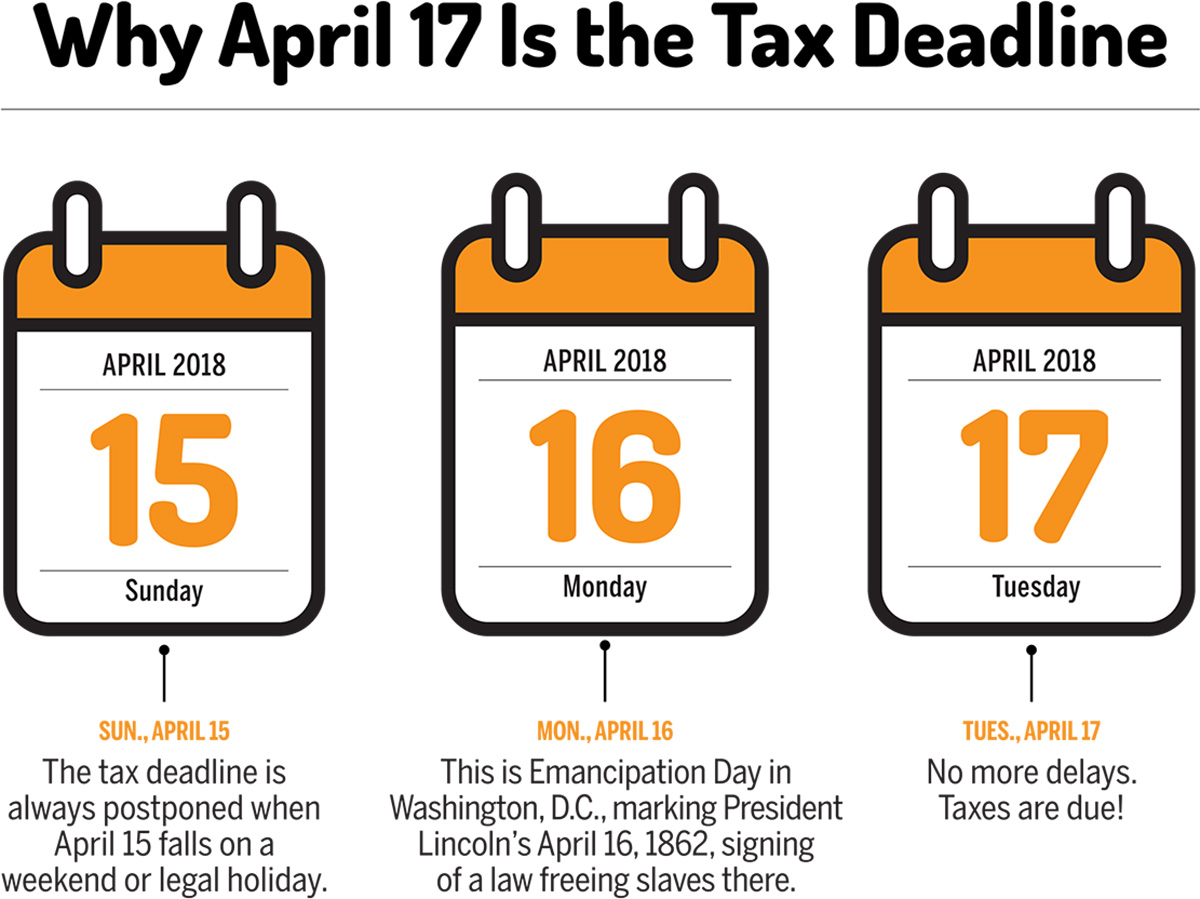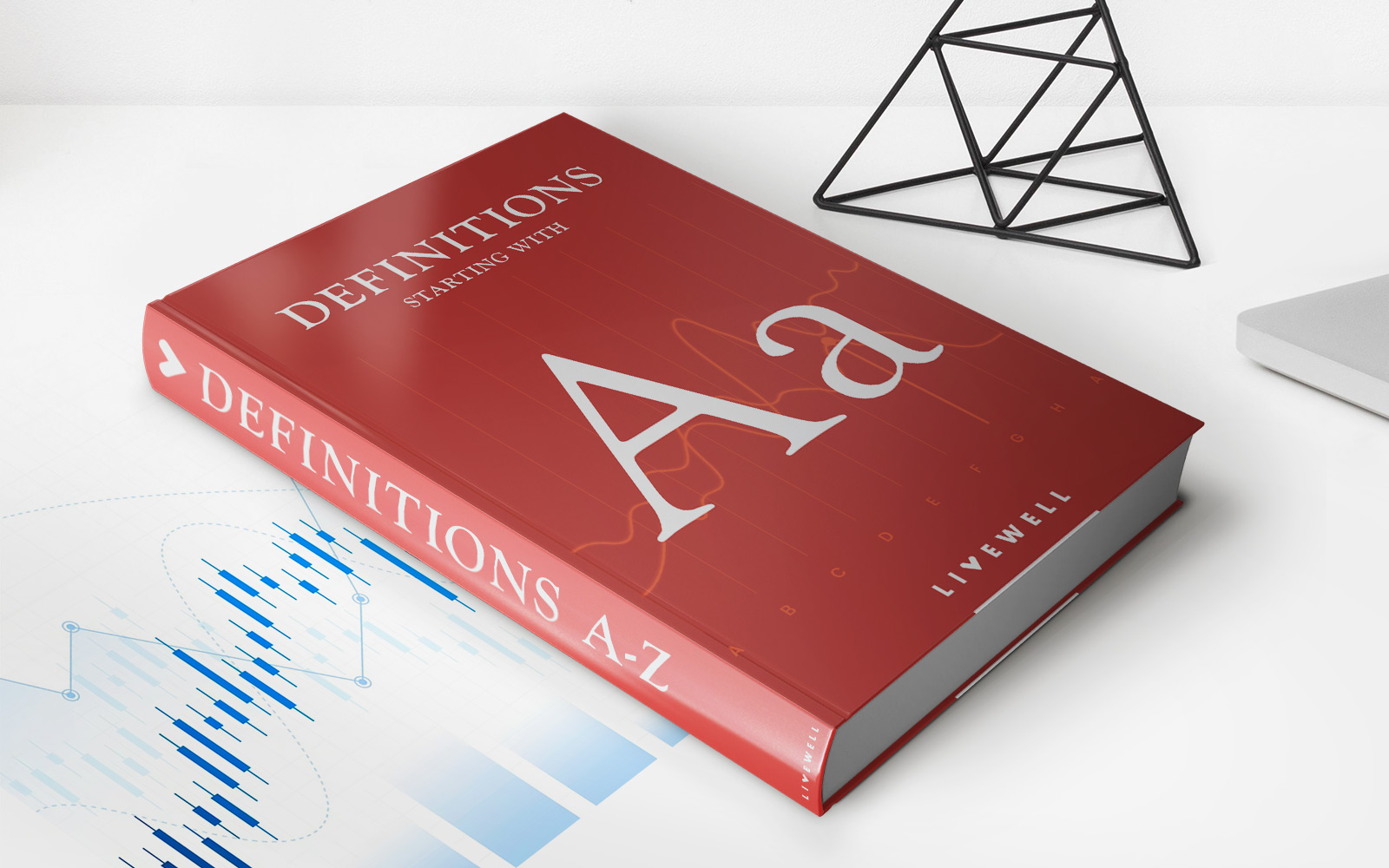

Finance
How To File Tax Return Without A W2
Published: October 28, 2023
Learn how to file your tax return without a W2 and navigate the world of finance with ease. #Finance #TaxReturn
(Many of the links in this article redirect to a specific reviewed product. Your purchase of these products through affiliate links helps to generate commission for LiveWell, at no extra cost. Learn more)
Table of Contents
Introduction
Filing your tax return is a crucial annual responsibility for individuals, ensuring compliance with tax laws and potentially leading to refunds or other financial benefits. The Internal Revenue Service (IRS) requires taxpayers to report their income accurately, usually using the information provided on their W-2 forms.
But what happens if you don’t receive a W-2 form from your employer, or if you misplaced it? Don’t panic. There are several steps you can take to file your tax return without a W-2 and fulfill your tax obligations effectively.
In this article, we’ll guide you through the process of filing your tax return without a W-2 form, explaining the necessary documents, calculations, and reporting methods. We’ll also explore your options for obtaining a replacement W-2 or filing a substitute form. Whether you’re an employee who didn’t receive a W-2 or a freelancer who didn’t receive a 1099 form, we’ve got you covered.
Before we dive into the details, it’s important to note that filing your tax return accurately and on time is crucial. Failure to do so could result in penalties, interest charges, or even an audit by the IRS. So, let’s explore how you can navigate this situation and meet your tax filing requirements without a W-2.
Understanding the W-2 Form
The W-2 form, also known as the Wage and Tax Statement, is a crucial document that employers provide to their employees at the end of the tax year. It outlines the income earned by the employee and the taxes withheld from their paychecks, including federal income tax, state income tax (if applicable), and Social Security and Medicare taxes.
The W-2 form contains various boxes that provide specific information. Here is a breakdown of the key sections:
- Box 1: This box reports the total amount of wages, tips, and other compensation that you earned during the tax year.
- Box 2: Here, you’ll find the amount of federal income tax withheld from your paychecks throughout the year.
- Box 3: This box displays your wages subject to Social Security tax, up to the annual wage base limit.
- Box 4: It shows the Social Security tax withheld from your earnings.
- Box 5: Here, you’ll find the wages subject to Medicare tax, with no annual limit.
- Box 6: This box displays the Medicare tax withheld from your earnings.
- Box 12: This section includes codes that represent different types of compensation or benefits, such as contributions to a retirement plan or the cost of employer-provided healthcare.
- Box 14: Employers can use this box to report additional information, such as union dues or educational assistance.
Understanding the information provided on the W-2 form is essential for accurately reporting your income and fulfilling your tax obligations. It serves as a key document for filing your tax return, whether you use it directly or as a reference for reporting income from other sources.
However, there are instances where you may not receive a W-2 form or you accidentally misplace it. In such cases, you’ll need to take specific steps to ensure that you accurately report your income and file your tax return without a W-2 form. Keep reading to learn more.
Gather Necessary Documents
When you don’t have a W-2 form, it’s important to gather all the necessary documents and information to accurately report your income on your tax return. While the primary focus is on the W-2 form, you can still compile the required information using alternative documents and resources.
Here are some essential documents and information to gather:
- Pay Stubs: If you haven’t received a W-2 form, your pay stubs can provide valuable information. They typically include details such as your year-to-date earnings, taxes withheld, and other deductions. Collect all your pay stubs from the tax year to calculate your total income accurately.
- Bank Statements: Review your bank statements to identify any direct deposits from your employer. These deposits can serve as evidence of your income and help you calculate your earnings.
- 1099 Forms: If you worked as an independent contractor or received income from other sources, you may have received 1099 forms. These forms report income received from freelance work, rental properties, or investment accounts.
- Expense Records: Keep track of any deductible expenses related to your work or business. This can include receipts for business-related travel, home office expenses, or work-related purchases.
- Tax Records: Review your previous year’s tax return and any relevant tax documents, such as Schedule C (if self-employed) or Schedule E (if you have rental income). These records can provide valuable information to accurately report your income.
- Record of Tips: If you work in a job where you receive tips, keep a record of your daily tips. This information will be required to report your tip income accurately.
- Other Income: If you have income from other sources, such as investments or side gigs, gather documents or records that reflect your earnings in those areas.
By gathering these necessary documents and information, you’ll have a comprehensive view of your income for the tax year. This will help you accurately report your earnings and fulfill your tax obligations even without a W-2 form.
Once you’ve collected all the relevant documents, it’s time to calculate your income using the information you have. In the next section, we’ll explore how you can determine your earnings and report them on your tax return without a W-2 form.
Calculate Your Income
When you don’t have a W-2 form, calculating your income becomes crucial to accurately report it on your tax return. By using the available documents and information, you can determine your earnings for the tax year. Here are the steps to calculate your income:
- Add up Your Wages: Start by adding up your total wages from all your pay stubs. If you received any bonus or commission payments, include those as well.
- Include Other Income: If you have income from other sources, such as freelance work or rental properties, gather the relevant documents and calculate the total amount earned.
- Account for Tips: If you receive tips in your job, make sure to include them in your total income. Use your recorded tip amounts to calculate the total tip income for the year.
- Consider Taxable Benefits: If your employer provides taxable benefits, such as a company car or employer-provided housing, include the value of these benefits in your total income.
- Deduct Business Expenses: For self-employed individuals or independent contractors, deduct any eligible business expenses from your total income. Make sure to keep accurate records of these expenses.
- Include Investment Income: If you have income from investments, gather the necessary documents to calculate your investment earnings for the year. This can include interest income, dividends, or capital gains.
By following these steps and considering all sources of income, you can have a more accurate calculation of your total income. It’s crucial to be thorough and ensure that you’re reporting all your earnings correctly, as underreporting income can result in penalties and potential IRS scrutiny.
Once you have calculated your income, the next step is to report it on your tax return without a W-2 form. In the next section, we’ll explore the different methods you can use to report your income accurately.
Reporting Your Income Without a W-2
When you don’t have a W-2 form, reporting your income on your tax return requires a different approach. Fortunately, the IRS provides alternative methods to accurately report your earnings. Here’s how you can report your income without a W-2:
- Use Form 4852: The IRS Form 4852, Substitute for Form W-2, Wage and Tax Statement, serves as a replacement for the missing or incorrect W-2 form. You can use this form to provide your estimated income and tax withholding. It requires you to input the relevant information, such as your employer’s name and address, as well as your estimated earnings.
- Include Documentation: When filling out Form 4852, include any supporting documentation, such as pay stubs or other income records, to substantiate your estimated income and tax withholding. This helps provide a more accurate representation of your earnings.
- Explain the Situation: In the “Explanation of Items” section on Form 4852, provide a detailed explanation of why you don’t have a W-2 form. Explain any attempts you made to obtain the missing form and the steps you took to accurately report your income.
- Tax Software or Professional Help: If you’re using tax software or seeking assistance from a tax professional, they should have provisions for reporting income without a W-2 form. Follow the software prompts or consult with your tax professional to ensure accurate reporting.
By using Form 4852 and providing supporting documentation, you can accurately report your income even without a W-2 form. It’s crucial to take the necessary steps to estimate your income as accurately as possible and explain the situation to the IRS. Honesty and transparency in reporting your income will help prevent any potential issues or further inquiries from the IRS.
However, keep in mind that relying on estimated income can pose risks. If you later receive the missing W-2 form or discover discrepancies in your reported income, you may need to file an amended tax return to correct any errors. It’s important to strive for accuracy and update your tax return if needed.
Now that you understand how to report your income without a W-2 form, let’s explore the options available to file your tax return in the absence of this essential document.
Filing Options Without a W-2
When you don’t have a W-2 form, you still have options to file your tax return and fulfill your tax obligations. Here are some filing options to consider:
- File Electronically: The IRS encourages taxpayers to file their tax returns electronically, as it is efficient and helps to avoid errors. Many tax software programs have built-in options to handle situations where a W-2 form is missing. These programs will guide you through the process of reporting your income and calculating your taxes accurately.
- Request an Extension: If you’re unable to obtain a W-2 form before the tax filing deadline, you can request an extension using IRS Form 4868. This extension will give you an additional 6 months to file your tax return. However, it’s important to note that the extension only applies to the filing of your tax return, not the payment of any taxes owed. You will still need to estimate your tax liability and make a payment by the original deadline.
- File by Mail: If you prefer to file your tax return by mail, you can still do so without a W-2 form. Use Form 4852 to provide your estimated income and tax withholding information. Make sure to include any supporting documentation, such as pay stubs or other income records, as well as a detailed explanation of your situation. Mail the completed forms to the address specified in the tax instructions.
- Amend Your Return Later: If you subsequently receive the missing or corrected W-2 form after filing your tax return, you can file an amended return using Form 1040X. This is necessary if there are any significant changes to your reported income or tax liability. Consult with a tax professional or use tax software to ensure accuracy when filing an amended return.
Choosing the right filing option depends on your specific circumstances. If you have all the necessary information to estimate your income accurately, electronically filing your tax return is often the most convenient method. However, if you anticipate difficulties in gathering the required documentation, requesting an extension or filing by mail may be more suitable options.
Remember, it’s crucial to strive for accuracy when reporting your income and pay any taxes owed by the appropriate deadlines. Filing your tax return without a W-2 form might require a bit more effort, but with the right approach and attention to detail, you can meet your tax filing obligations successfully.
Next, we’ll explore the steps you can take to request a replacement W-2 form from your employer.
Requesting a W-2 Replacement
If you haven’t received a W-2 form from your employer or you misplaced it, one of the first steps you should take is to request a replacement. Here are the steps you can take to obtain a replacement W-2:
- Contact Your Employer: Reach out to your employer and inform them that you haven’t received your W-2 form. Ask them to provide you with a copy or send you a replacement. Make sure to provide your correct mailing address or email address for delivery.
- Check Your Online Employee Portal: Some employers offer an online employee portal where you can access your W-2 form. Log in to the portal and check if your W-2 form is available for download or printing.
- Verify Your Contact Information: Double-check that your employer has your correct contact information, including your mailing address and email address. If they have been sending your W-2 form to an outdated address, update them with your current details.
- Submit IRS Form 4506: If you haven’t received a response from your employer or they are unresponsive, you can file IRS Form 4506, Request for Copy of Tax Return. This form allows you to request a copy of your entire tax return, including any W-2 forms that were included in the return. There is a fee associated with this service.
- Use Substitute Form: If you’re unable to obtain a replacement W-2 form in time to file your tax return, you can use IRS Form 4852, Substitute for Form W-2, Wage and Tax Statement, as mentioned earlier. This form allows you to estimate your income and tax withholding based on the available information.
It’s important to promptly request a replacement W-2 form from your employer and follow up to ensure its delivery. Keep in mind that employers are required by law to provide W-2 forms to their employees by the end of January. If you still haven’t received your W-2 by then, take the necessary steps to obtain a replacement or use alternative methods to report your income.
In the absence of a replacement W-2 form, utilizing Form 4852 or other alternative reporting methods discussed earlier will allow you to file your tax return on time and ensure compliance with the IRS requirements. However, keep in mind that it’s always best to have an accurate and official W-2 form whenever possible.
Now, let’s explore the option of filing a substitute form if you’re unable to obtain a W-2 replacement or estimate your income accurately.
Filing a Substitute Form
When you’re unable to obtain a replacement W-2 form or accurately estimate your income, you can file a substitute form as an alternative method to report your earnings. The IRS provides Form 4852, Substitute for Form W-2, Wage and Tax Statement, for this purpose. Here’s how you can use a substitute form to file your tax return:
- Obtain Form 4852: Download Form 4852 from the IRS website or obtain a physical copy from a local IRS office. Ensure that you have the most recent version of the form.
- Provide Personal Information: Fill in the required personal information on Form 4852, including your name, Social Security number, and address. Make sure to double-check the accuracy of the provided information.
- Estimate Your Income: In Part I of Form 4852, provide an estimate of your wages and taxes withheld. Use the information available to you, such as pay stubs, bank statements, or any other documentation. Be as accurate as possible, but note that this is an estimate.
- Explain the Situation: In Part II of Form 4852, explain the reason for using the substitute form. Provide a detailed explanation of why you don’t have an official W-2 form and the steps you’ve taken to obtain a replacement.
- Attach Supporting Documents: Include any supporting documentation that can help validate your estimated income and taxes withheld. This can include pay stubs, bank statements, or other records that reflect your earnings.
- File the Form: Once you have completed Form 4852 and attached any necessary documentation, file it along with your tax return. You can use electronic filing methods or mail your forms to the appropriate IRS address.
Filing a substitute form allows you to report your income in the absence of an official W-2 form. However, it’s important to be aware that using a substitute form may increase the likelihood of your tax return being subjected to further scrutiny or audit by the IRS. Therefore, it’s essential to strive for accuracy and provide as much supporting documentation as possible.
If you later receive the missing or corrected W-2 form after filing your tax return using a substitute form, you may need to file an amended return to correct any discrepancies. Consult with a tax professional or use tax software to ensure accuracy when filing an amended return.
While filing a substitute form should be a last resort, it allows you to fulfill your tax obligations when official documentation is not available. Always prioritize obtaining a replacement W-2 form or accurately estimating your income whenever possible.
Now, let’s explore the option of seeking professional help when you’re facing challenges in filing your tax return without a W-2 form.
Seeking Professional Help
When you encounter challenges in filing your tax return without a W-2 form, seeking the assistance of a tax professional can be beneficial. Tax professionals, such as certified public accountants (CPAs) or enrolled agents (EAs), have the expertise and knowledge to navigate complex tax situations. Here’s how they can help:
- Expert Advice: Tax professionals have a deep understanding of tax laws and regulations. They can provide personalized advice based on your specific circumstances, ensuring that you accurately report your income and maximize any eligible deductions or credits.
- Guidance on Alternative Reporting: If you’re unsure how to report your income without a W-2 form, a tax professional can guide you through the process. They can help you use substitute forms or estimate your income accurately, reducing the risk of errors or IRS inquiries.
- Access to Resources: Tax professionals have access to resources and tools that can simplify the tax filing process. They are equipped with tax software or electronic filing platforms, allowing for efficient and accurate preparation of your tax return.
- Audit Support: If your tax return is selected for an audit by the IRS, having a tax professional by your side provides valuable support. They can represent you, communicate with the IRS on your behalf, and ensure that you’re well-prepared to address any audit-related issues.
- Peace of Mind: By working with a tax professional, you can have peace of mind knowing that your tax return is being handled by a knowledgeable expert. They can help you avoid mistakes and ensure compliance with tax laws, reducing the stress and uncertainty that can arise from filing without a W-2 form.
When selecting a tax professional, consider their qualifications, experience, and reputation. Look for individuals who specialize in tax matters and have a track record of successfully assisting clients in challenging tax situations. You can ask for recommendations from friends, family, or colleagues, or search for professionals affiliated with reputable organizations like the American Institute of Certified Public Accountants (AICPA) or the National Association of Enrolled Agents (NAEA).
While seeking professional help may involve additional costs, the benefits and peace of mind that come with their expertise can often outweigh the expenses. Ultimately, a tax professional can provide the guidance and support needed to ensure that your tax filing experience is smooth and compliant, even without a W-2 form.
Now that you’ve explored various options for filing your tax return without a W-2 form and seeking professional help, it’s important to remember the significance of meeting your tax obligations accurately and on time. Take the necessary steps to report your income, estimate as accurately as possible, and submit your tax return by the designated deadline.
Finalize your tax return, review it for any errors or missing information, and consider electronic filing for a faster and more streamlined process. If you encounter challenges along the way, don’t hesitate to reach out to the IRS or seek assistance from a tax professional. By proactively addressing any issues, you can ensure a smooth tax filing experience and avoid unnecessary penalties or complications.
Good luck with your tax return, and may it lead to a favorable outcome for your financial well-being.
Conclusion
Filing your tax return without a W-2 form may seem daunting, but with the right approach and understanding, it can be manageable. By following the steps outlined in this guide, you can accurately report your income and fulfill your tax obligations even in the absence of a W-2 form.
Start by gathering all necessary documents, such as pay stubs, bank statements, and 1099 forms, to determine your income for the tax year. Calculate your earnings to the best of your ability, considering tips, taxable benefits, and any other sources of income.
If you are unable to obtain a replacement W-2 form, utilize Form 4852 as a substitute form to report your income. Provide as much supporting documentation as possible and explain your situation clearly to the IRS. Consider seeking professional help from a tax professional who can guide you through the process and ensure compliance with tax laws.
Remember, accurate reporting of your income and timely filing of your tax return are crucial to avoid penalties and ensure compliance with the IRS. Strive for accuracy, pay any taxes owed by the deadline, and keep records of your communication with employers or attempts to obtain a replacement W-2 form.
While filing your tax return without a W-2 form may require extra effort and attention, it is important not to let it deter you from meeting your tax obligations. Explore your options, follow the guidelines provided, and seek assistance when needed. By doing so, you can successfully file your tax return and maintain financial peace of mind.
Always stay informed about the latest tax laws and regulations, as these may change periodically. The IRS website, tax professionals, or reputable tax resources can provide updated information and guidance to ensure accurate reporting of your income.
With the insights gained from this guide, you are now well-equipped to navigate the process of filing your tax return without a W-2 form. Take control of your tax filing responsibilities and approach them with confidence, knowing that you have the knowledge and resources at your disposal.
Good luck with your tax filing journey, and may it bring you financial stability and peace of mind.














